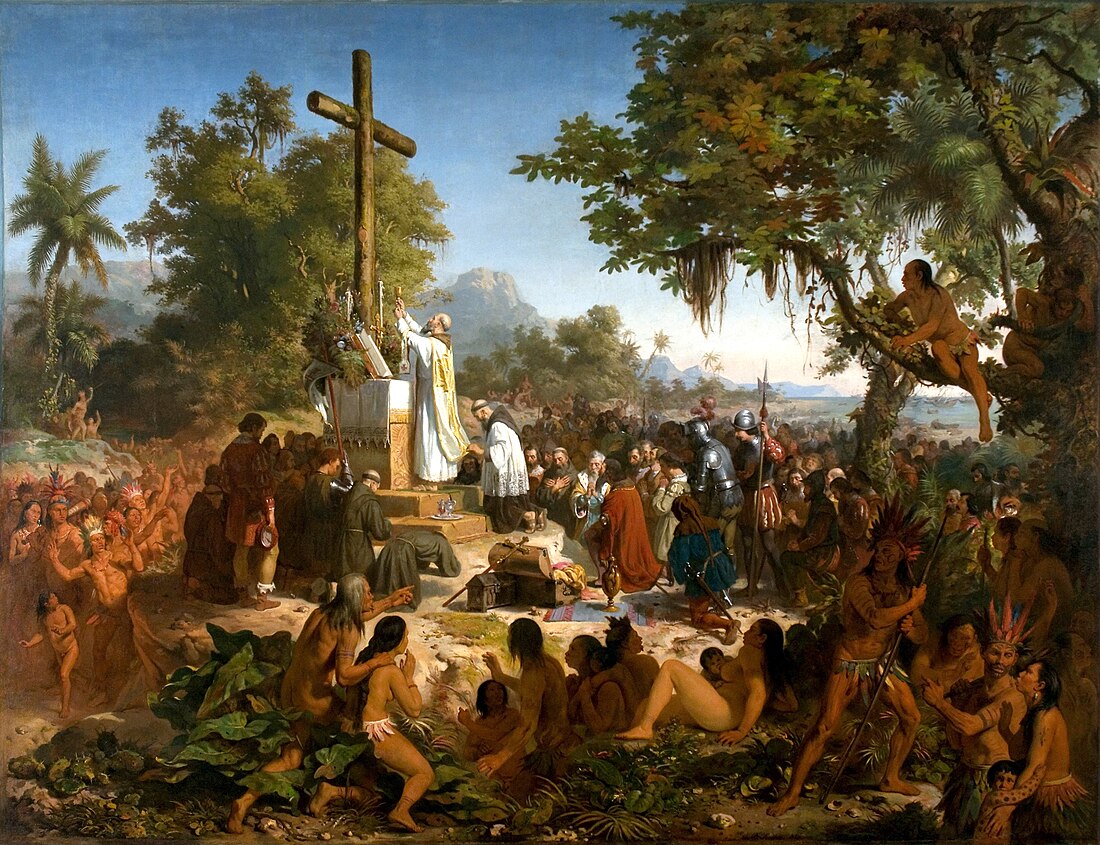Top Qs
Timeline
Chat
Perspective
Henrique de Coimbra
Portuguese catholic friar From Wikipedia, the free encyclopedia
Remove ads
Henrique Soares de Coimbra O.F.M. (Coimbra, ca. 1465 – 14 September 1532 (aged 66–67)) was a Portuguese friar and bishop. He was a renowned missionary in India and Africa and traveled with the fleet of Pedro Álvares Cabral in 1500. In Brazil, he is known for celebrating the first mass in the country on 26 April 1500.
This article needs additional citations for verification. (November 2020) |
Remove ads
Remove ads
Biography
Summarize
Perspective

D. Frei Henrique de Coimbra was a confessor of D. John II and of the Convent of Jesus (Setúbal). He was an observant in Alenquer, at the first Franciscan Convent in Portugal. In Pedro Álvares Cabral's expedition, Henrique de Coimbra led a group of religious men destined for missions in the East. In Calicut, after the discovery of Brazil and the voyage to India, five out of the eight religious men were killed in a clash with Muslims following the betrayal of the Samorim. Due to the mission's failure, Henrique de Coimbra returned to Portugal.
D. Manuel I then chose him as the Bishop of Ceuta, Primate of Africa, and Apostolic Administrator of Valença, confirmed by Pope Julius II on 30 January 1506.
In 1512, he reached an agreement with the Archbishop of Braga, D. Diogo de Sousa, which led to the inclusion of Olivença in the territory of the Diocese of Ceuta. It was in Olivença that he established the seat of his bishopric. In this location, Henrique de Coimbra built the episcopal palace, the court, and the jail, as well as the Church of Santa Maria Madalena, which served as the cathedral and is "one of the noblest and purest examples of Manueline architecture" (Reinaldo dos Santos, O Manuelino). It was in this temple that the mortal remains of Henrique de Coimbra were kept.
His coat of arms, as seen in the Book of the Portuguese Armorial-Mor from 1509, was: purple, a passant silver lamb with a cord of Saint Francis of the same color, placed in an orle, which appears to be a modification of his own surname's coat of arms, certainly for religious reasons.[1]
Remove ads
See also
References
External links
Wikiwand - on
Seamless Wikipedia browsing. On steroids.
Remove ads


